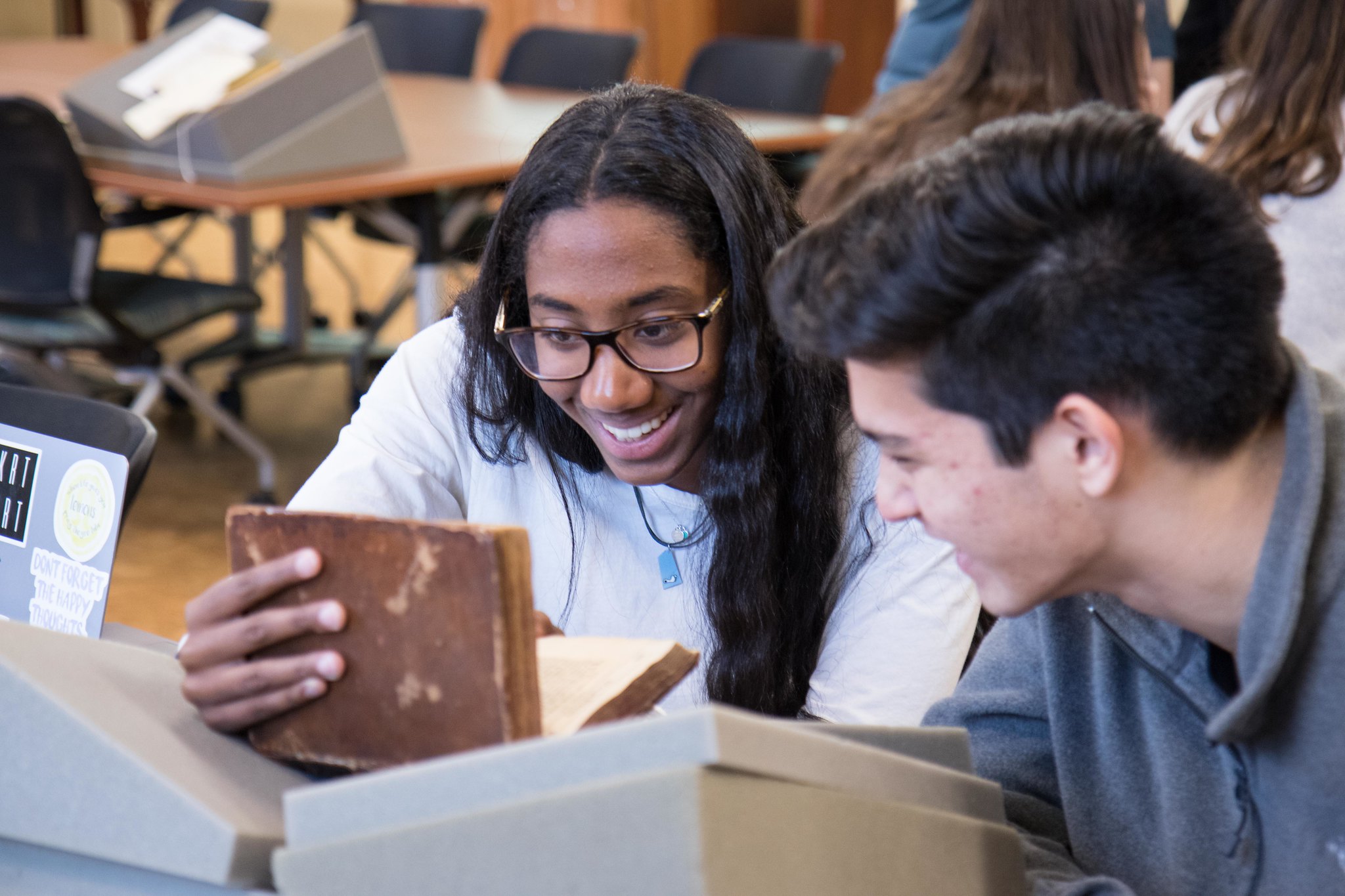 The Research and Instructional Services team at Wilson Special Collections Library provides primary source-based learning for students and community members.
For the Fall 2020 semester, we will provide all instruction remotely both synchronously and asynchronously.
Our teaching and learning services include:
The Research and Instructional Services team at Wilson Special Collections Library provides primary source-based learning for students and community members.
For the Fall 2020 semester, we will provide all instruction remotely both synchronously and asynchronously.
Our teaching and learning services include:
- consultations with instructors about possible assignments and lessons using primary sources;
- online displays of relevant special collections materials;
- virtual activities in which students observe, analyze, and interpret primary sources;
- guided discussions about a set of primary sources related to the course topic or theme;
- semester-long engagements in which students curate a physical or virtual exhibit; and
- special collections research guides.
- faculty and students in a range of classes across UNC’s curriculum;
- faculty and students from other colleges and universities;
- K-12 teachers and students from across the state of North Carolina; and
- community groups with an interest in special collections.
Example Lessons
The Research and Instructional Services team collaborates and consults with instructors to design lessons and activities. The example lessons below show how we introduce primary sources in undergraduate classes. Librarians can adapt these lessons — or work with instructors to create new lessons — to align with a wide variety of course goals and student learning outcomes.Teaching with Rare Books
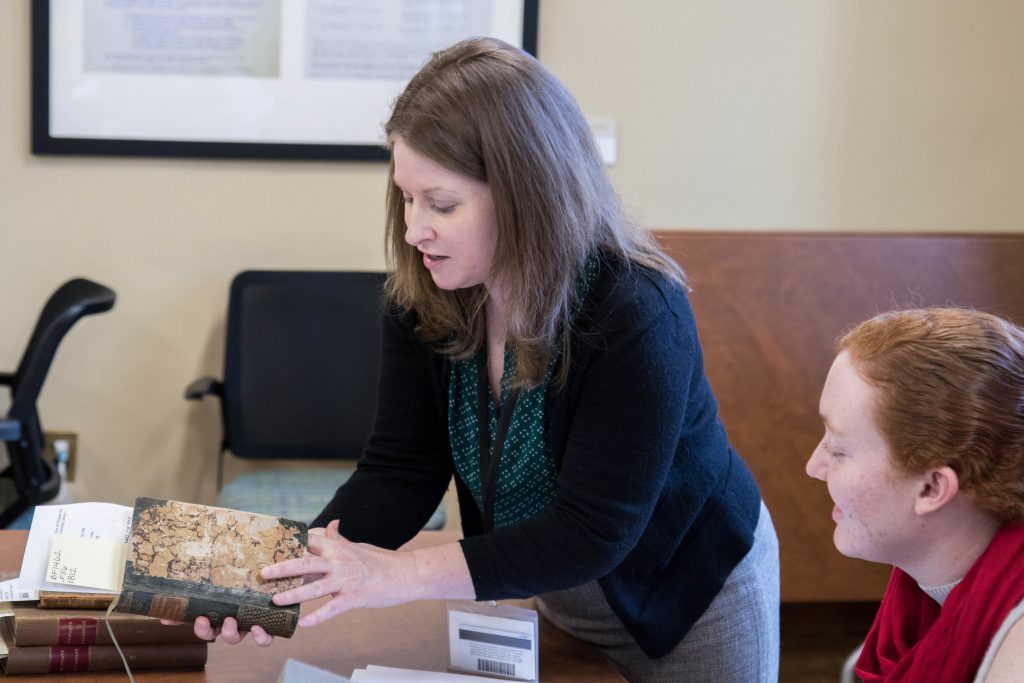
Example Lesson: The Book as Artifact
We often think of books as texts, but books are also artifactual objects that can reveal their own histories. A book can tell the story of its own existence, and some books can bring us in touch with the lives of the people who made, owned, and handled them. During their visit to Wilson, students examine books relevant to their subject matter and time period. An in-class activity guides students’ critical examination of these books’ artifactual elements, including:
-
- the book’s shape, size, and quality;
- visual rhetoric of any illustrations;
- textual rhetoric of any paratext;
- annotations or use marks left behind by readers; and
- material elements relating to how the books were made.
Teaching with Manuscripts
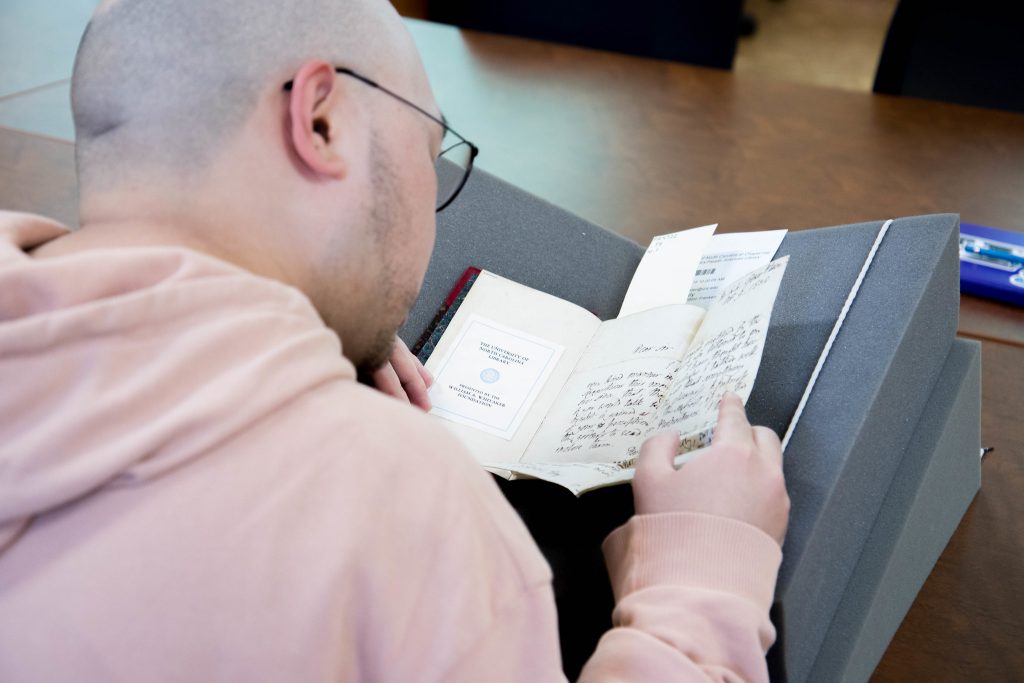
Example Lesson: Life Histories in Context
The Federal Writers’ Project Papers reveal the details of ordinary people’s lives in different historical, social, and cultural contexts. It includes a set of 1,200 “life histories” of everyday people living in the American South in the 1930s. In a class at Wilson, students engage with these documents by putting them in historical context, examining editorial notes, and considering:
-
- the relationship and negotiation between subject, author, and editor;
- the role of dialogue, setting, and other details in crafting a compelling narrative;
- the authors’ biases, and how those affect representation in a narrative; and
- the roles of race, gender, and class in the early twentieth-century American South.
Teaching with North Carolina Materials
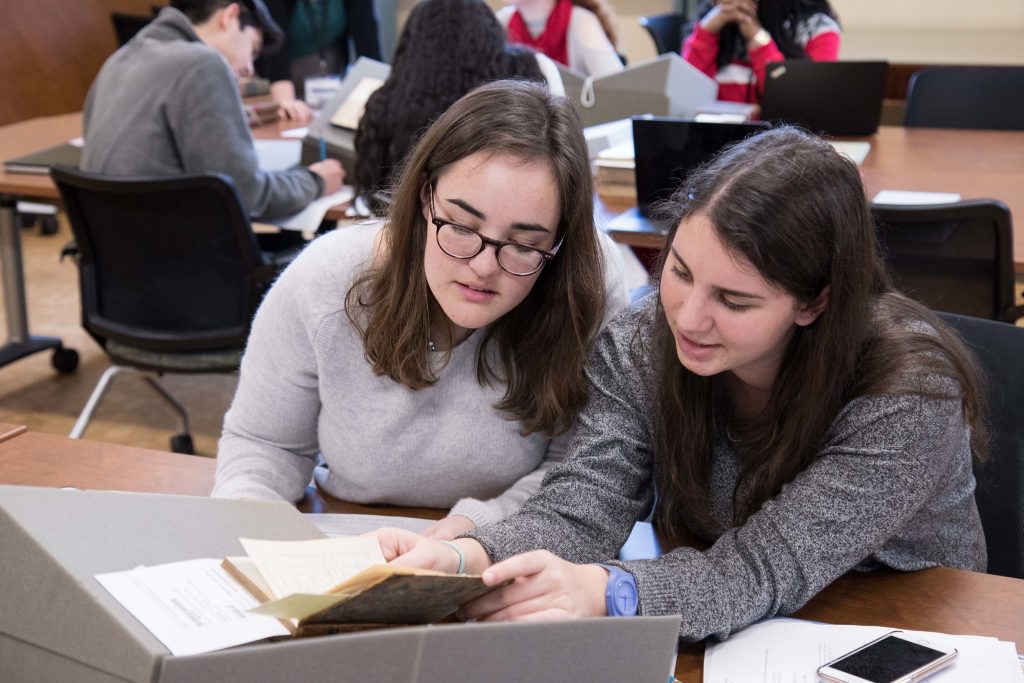
Example Lesson: Environmental Literature and Narrative
In this interdisciplinary first-year seminar, students read environmental narratives and draw conclusions about human impact on the environment. They work to understand, document, and describe environmental change in Ocracoke, a town on the Outer Banks of North Carolina. They also get exposure to primary source literacy and develop skills such as:
-
- comparing and contrasting maps to understand how climate change has affected coastlines;
- analyzing the economic impact of environmental change on communities that rely on tourism;
- conducting research with primary sources produced by the government, small businesses, and other diverse entities; and
- considering the voices and needs of locals as expressed through primary sources.
Teaching with Audiovisual Materials
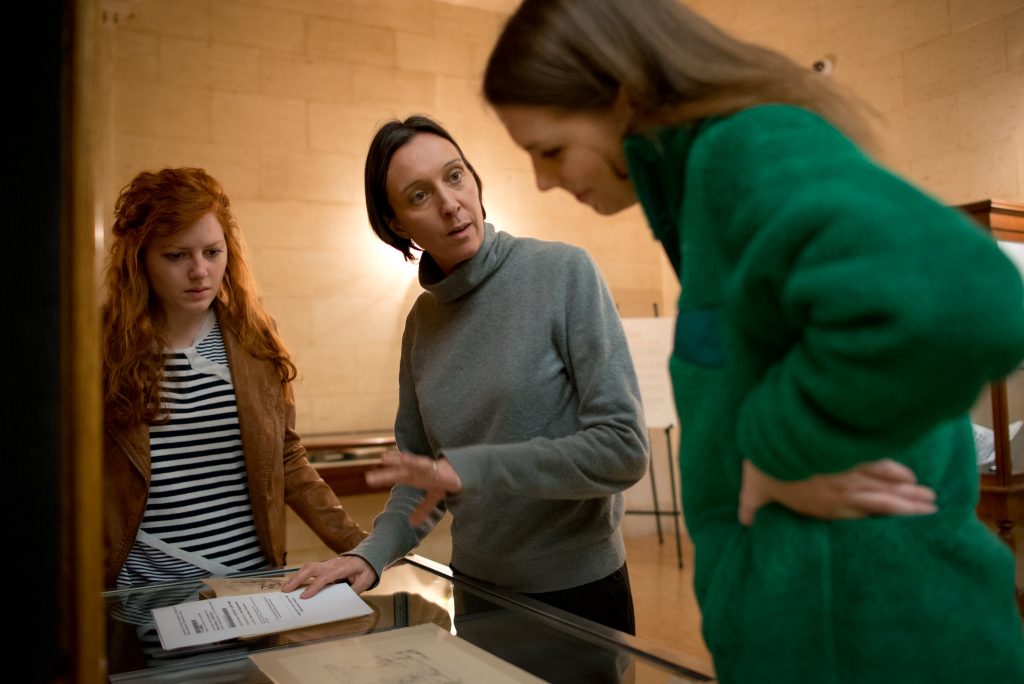
Example Lesson: Documentary Production
In this media production course, students produce their own original documentaries. A guided activity with primary sources introduces students to the wide range of audiovisual materials they could use in their projects. Visiting Wilson also equips students with diverse research skills, such as:
-
- searching for relevant archival moving image and audio sources using finding aids;
- evaluating video and audio sources using criteria like quality of reproduction and file format; and
- reusing and repurposing audiovisual materials ethically, requesting permissions where appropriate and ensuring copyright compliance.
Our Team
The following Research and Instructional Services staff members have principal responsibility for providing special collections instruction:- Jason Tomberlin, Head of Research & Instructional Services
- Aaron Smithers, Special Collections Research & Instruction Librarian
- Matthew Turi, Manuscripts Research & Instruction Librarian
- Sarah Carrier, North Carolina Research & Instruction Librarian
Teaching Philosophy
Our teaching team follows best practices and guidelines for primary source literacy instruction, as outlined by the Society of American Archivists and Association of College and Research Libraries’ Rare Book and Manuscript Section. We believe that primary source research encourages learners to develop a range of skills, both academic and personal. By engaging with primary sources, learners begin to:- think critically;
- relate to history on a personal level;
- grapple with complexity, uncertainty, and contradictions;
- approach academic writing more creatively; and
- synthesize different types of information and sources.






